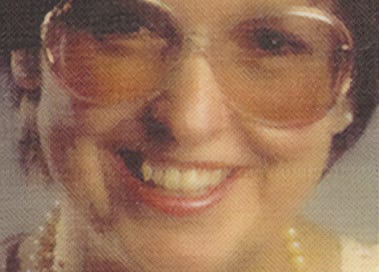Authors like Neal Stephenson have been clamoring for more optimistic science fiction stories lately while others, like Carrol Fix, have been writing and publishing those stories for decades.
Although she passed away last year, reading about her life gives us some clues about why she was an early adopter of optimism. Having a big happy family tends to make one believe in a better future.
And there’s the fact that she worked in the tech industry during the go-go 80’s and 90’s. In those days, the possibilities seemed limitless.
Her optimistic novel, ‘MISHKA: Book One of The Quadrate Mind’, won the Published Fiction Third Place Award in the 2005 Arizona Literary Contest and Book Awards. It was also a winner in the Pikes Peak Writers' 2000 Paul Gillette Memorial Writing Contest.
After writing Mishka, Carrol published and edited numerous other novels and anthologies. She also mentored several fledging authors — like me.
In 2014, my Science Fiction & Fantasy Writing teacher Daniel Marcus dared every member of our class to send a story out to a magazine or anthology for the express purpose of being rejected. I’d already had that experience years before, when the heartfelt stories I sent to Mademoiselle Magazine received the standard “…thank you for your submission, yada yada, but this does not fit the needs of our magazine...”.
I didn’t have much enthusiasm for the assignment until I saw a submissions request from Lillicat Publishers for their anthology, Visions III: Inside the Kuiper Belt. They wanted stories about “life in a distant future”, where “human interaction is a constant”. Stories by authors who believed that humanity had a future.
I was already thinking of writing a story for class about the sad story of a French couple who died while hiking in my favorite New Mexico spot, White Sands National Park. They passed away from dehydration, but their 9-year-old son survived because they gave him their extra water rations.
Tragedies like this make me wonder – would they have survived in a more high-tech age when people were artificially enhanced and more able to contact each other from remote places? Would these futuristic people be more willing to take risks, or would they be more cautious? Would they go to such great lengths to protect their children?
Devil’s Spit, about a (possibly) doomed family outing in the far distant future, was my attempt to answer those questions. Yes, it was a social/human interest story, not hard sci fi but since the point of the exercise was rejection, I poured my heart into it.
And it was accepted — by Carrol Fix. I couldn’t believe it at first. But she had won all those awards — she must know what she was doing.
Over the next few years, I contributed to other Visions Anthologies, venturing beyond our solar system to The Space Between the Stars, beyond that to distant Galaxies and even beyond our Universe. All with the goal of examining humanity’s willingness to survive, to venture outward and to explore.
From Carrol’s obituary I read that She enjoyed traveling with her cat Lilly in her 37’ motorhome, pulling along her car. She was known as Rollingranny.”
I guess that’s why her publishing house was named ‘Lillicat’
May Carrol’s dreams and ideas keep rolling on, beyond Earth, Mars and the stars.




